Nationalgalerie,
Hamburger Bahnhof – Museum für Gegenwart,
Berlin 23.08.20 - 17.01.21
A special exhibition of the Nationalgalerie der Staatlichen Museen zu Berlin in collaboration with the Foundation for Photography and Media Art with the Michael Schmidt Archive.
Michael Schmidt occupies an entirely unique position in Germany’s contemporary photography. Born in Berlin, he came self-taught to photography as his artistic medium in the mid-1960s. For each of his themes he developed his own photographic approach to reality. The retrospective at the Hamburger Bahnhof presented a first overview of his entire oeuvre. It was the photographer’s first retrospective to be put on in his native city after twenty-five years.
Initially, Michael Schmidt focused on Berlin in his work. Here, works were commissioned in the early 1970s by district offices and the Senate on districts such as Kreuzberg and Wedding and on social themes. The book and exhibition project Waffenruhe (Ceasefire), a visually stunning psychogram of the still divided city, which was shown in Berlin for the first time in 1987, paved the road for Michael Schmidt’s international reputation. The close concentration on the motif world of his native city was subsequently abandoned for U-ni-ty, a group of works focusing on the unification process. It premiered in 1996 at the Museum of Modern Art in New York.
Michael Schmidt’s oeuvre comprises portraits, self-portraits, cityscapes and stilllifes. In his work he draws attention to the expressivity of urban space, the persistent topicality of history, the self-portrait, female self-awareness, the role of the province and the significance of nature. In his last project he put contemporary food production centre stage.
Relying as closely as possible on forms of presentation devised and tested by Michael Schmidt himself, this retrospective featured work prints, book designs and archival material in addition to work groups with original prints. The photographic approach to reality he kept working on all the time and the different publication formats confer exemplary status on his work. While paying specific homage to this work, which is now considered to be one the outstanding pillars of photography in German twentieth-century art history, the retrospective also seeked to cover the development of photography as a mode of artistic expression since the 1970s.
The retrospective at Hamburger Bahnhof – Museum für Gegenwart – Berlin had eight thematically organized main focus.
1.)
Berlin Kreuzberg, 1969–1973
Die berufstätige Frau in Kreuzberg (The Working Woman in Kreuzberg), 1975
Berlin-Wedding, 1976–78
Berlin Stadtbilder (Berlin Cityscapes), 1979
Benachteiligt (Disadvantaged), 1980
Berlin-Kreuzberg. Stadtbilder (Berlin-Kreuzberg. Cityscapes), 1981–82
Michael Schmidt discovered his interest in photography when he was a member of the West Berlin police force. He worked hard to improve his technique, intermittently in clubs of amateur photographers, but chiefly by himself. In the mid-1960s he made the first photographs he did not reject later. However different the motifs of these photographs may be, they have one thing in common: they eschew the quick readability often expected of photography.
By 1973 Schmidt was working as a professional photographer, having been commissioned by the district office in Kreuzberg to do a book on the district. It was published in 1973; a second edition was called for almost immediately. Other works followed, commissioned by other city districts and Berlin’s Senate. In Die berufstätige Frau in Kreuzberg (The Working Woman in Kreuzberg) he depicted a typical day in the life of women juggling work and leisure.
By the early 1970s he began to give courses in photography at colleges of further education. In 1976 he founded the Werkstatt für Photographie at the Volkshochschule Kreuzberg, which kept going until 1986. Works of contemporary American photographers were shown there that had not previously been accessible to the public in Germany at that stage.
In 1977, he photographed the district Berlin-Wedding and its inhabitants, using a strictly documentary style. He enlarged his shots in prints rich in shades of grey and published the series in 1978. In another project funded by the Senate he documented in 1981 the everyday lives of four people who were having to cope with chronic illnesses or handicaps. In Berlin-Kreuzberg. Stadtbilder, a photo book published in 1983, he began to turn away from the traditional documentary pictorial idiom and to experiment with more personal ways of seeing.
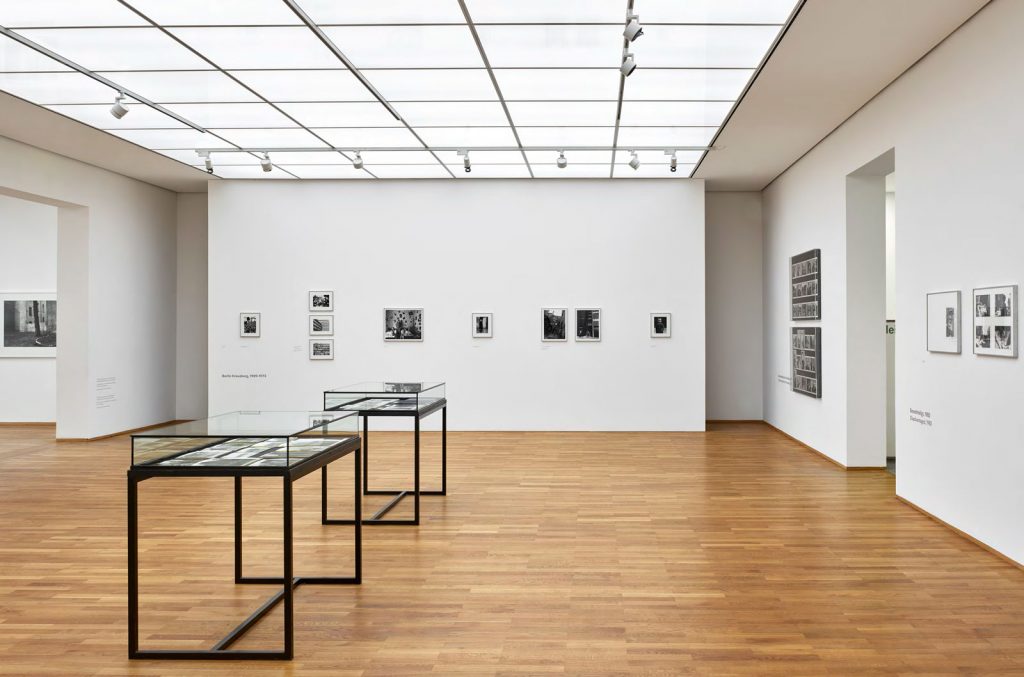
photo © Achim Kukulies, Dusseldorf
2.)
Berlin Kreuzberg, 1969–73
Berlin Stadtbilder (Berlin Cityscapes), 1977–83
Berlin nach 45 (Berlin since 1945), 1980
Stadtlandschaften (Urban Landscapes), 1981
89/90, 1989/2009
Between his beginnings as a photographer in the mid-1960s and German unification, his native city Berlin was Michael Schmidt’s chief source of motifs, for which he used a wide range of photographic techniques. In his first museum exhibition at all in Essen in 1981 Michael Schmidt showed his Stadtlandschaften, which highlighted the provisional postwar character of Berlin cityscapes, marked as they were by gaps between buildings, brownfields and scarred facades.
Between 1978 and 1980 he photographed deserted vistas devoid of human life in Berlin’s Friedrichstadt, a district that had been particularly badly hit in the war. Here too vacant lots and derelict industrial and commercial buildings set the tone, photographed in diffuse light with a large plate camera. He had arrived at pictorial compositions that uniquely combined documentation and abstraction. Berlin nach 45 was not presented and published until a quarter of a century after its completion.
In 1989/90 Michael Schmidt turned his attention to his native city for the last time, documenting the visual evidence of the consequences of unification. He found many of his motifs in the border strip and the no-man’s land near the former wall. Entitled 89/90, this work, too, was published with great delay in 2010.
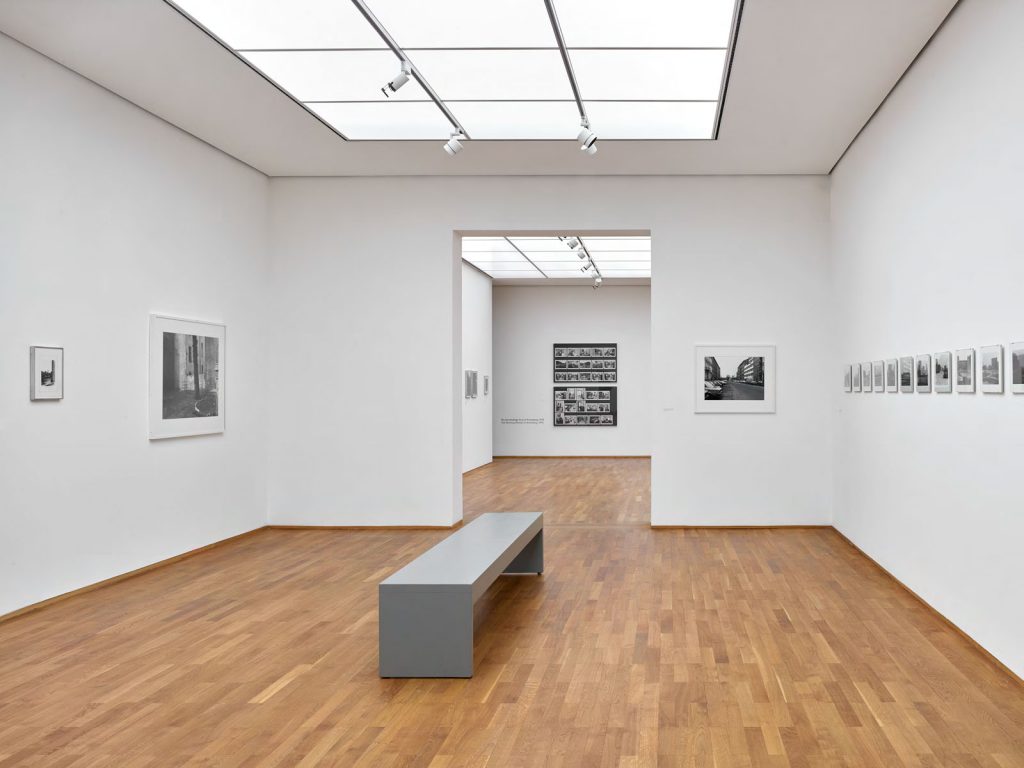
photo © Achim Kukulies, Dusseldorf
3.)
Waffenruhe (Ceasefire), 1985–87
Unlike the studiedly sober photos of his earlier series, the picture of the still divided city Michael Schmidt drew in the mid-’70s in the book and exhibition project Waffenruhe, with its condensed, fragmentary and contrasting black and white photographs, is highly subjective and multifacetted. This group of works marks the radical end point of the attempt to give form to a photographic rendering of Berlin’s political situation and to express its confusing complexity and lack of perspective in atmospheric images.
His photography does not at this stage make predominant use any longer of the means available to documentation; instead, it formulates in picture combinations that consistently defy expectations the dystopian attitude towards life of a generation immediately before the fall of the Wall. Schmidt develops the picture of a world marked by non sequiturs and lacunae, which has conclusively rejected any claim to one-upmanship. In concert with theatre director and writer Einar Schleef’s texts that form part of the book, a totally idiosyncratic, uncompromising take on the fragility of human existence emerges.
The project was funded in the context of the celebration of Berlin’s 750th anniversary and was first shown in the Berlinische Galerie at the Martin-Gropius-Bau in the immediate vicinity of the Wall. Waffenruhe ensured Michael Schmidt’s international breakthrough when it was shown at The Museum of Modern Art in New York as part of a group exhibition. Michael Schmidt now received grants from outside of Berlin as well and photographed fellow citizens from abroad in this context.
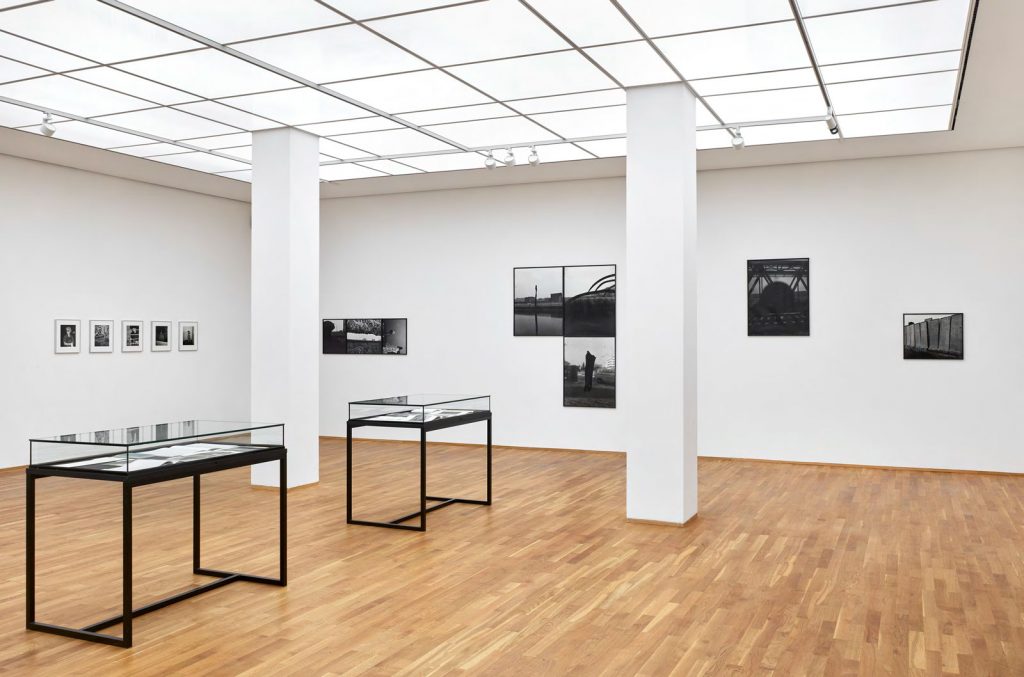
photo © Achim Kukulies, Dusseldorf
4.)
Berlin Stadtbilder (Berlin Cityscapes), 1982
Portraits, 1987–94
Architektur (Architecture), 1989–91
Tight framing, typically shallow depth of focus and the choice of what appeared at that time to be unusually large picture formats are characteristic of the works after Waffenruhe. Here Michael Schmidt turned his attention to architecture and the portrait in a manner that no longer insisted on making connections visible or on the wish for transparency. The photographic method allows motifs to become detached from their concrete urban or personal context and to become symbolic emblems of metropolitan life, history and society. Architektur and Portraits are characterised by the presence and materiality of their objects and the immediacy of encounter.
Interspersed among major projects there was a multiplicity of less ambitious works in which Schmidt cultivated his freedom as an artist and continued to experiment with photographic methods and formal idioms.
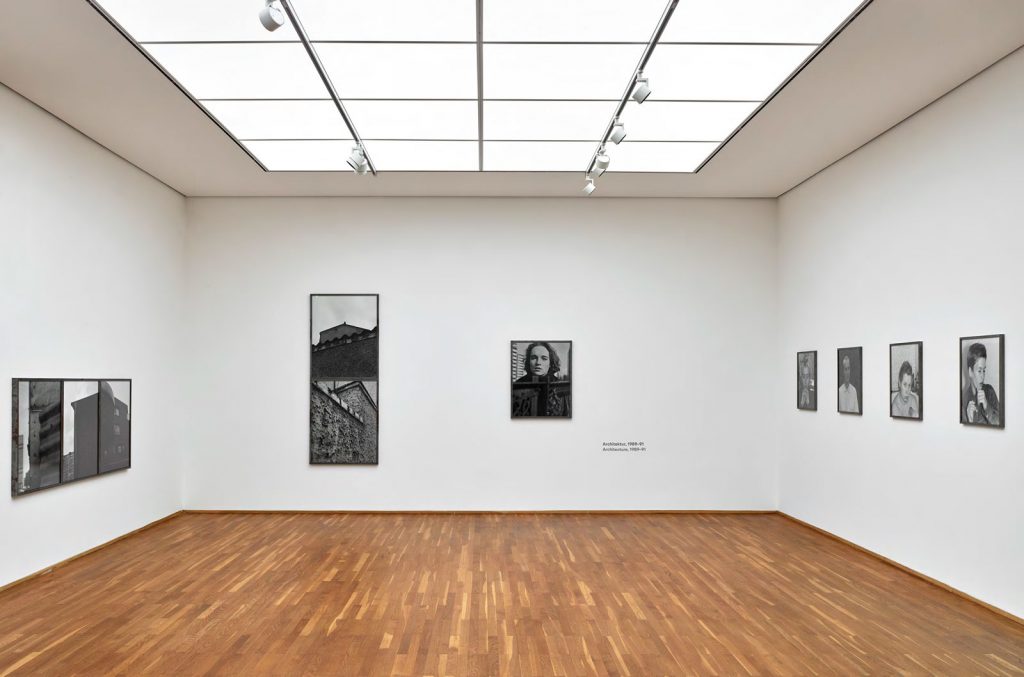
photo © Achim Kukulies, Dusseldorf
5.)
U-ni-ty, 1991–94
In this group of works, which took shape during unification, Michael Schmidt concerns himself with history and the universal symbolism of the social systems predominant on German soil since 1933: National Socialism, Socialism and Democracy. This is the backdrop against which the artist raises the question of the individual’s all-decisive role in society and of their choice of the side where they will take their stand.
In Michael Schmidt’s eyes a published photograph was an integral part of objective reality and no less entitled to being photographed than, say, a human being or a building. In U-ni-ty he subjected this approach to further development. His photographs of photographs, which account for roughly one third of this body of work, comprise in addition to strongly cropped and occasionally inverted photographs straightforward renderings of existing photographic material, which he typically combined with his own photographs. In doing so, Schmidt rephrased the content of the original photographs to suit his own conception, deprived them of their unambiguousness and added further layers of interpretability.
In addition, he made use of the strategy of repetition and the variation of motifs he had already deployed in some of his early works. Arranged in this way, the photographs constitute the grammar of a highly specific visual idiom. Habituated as they are to the traditional exposure to photographic images, observers are at first kept at bay by the images’ refusal to be read at one fell swoop but are subsequently allowed an individual, associative approach on the basis of collective knowledge.
U-ni-ty premiered in 1996 at The Museum of Modern Art in New York, where it was the first solo exhibition of a German photographer in several decades.
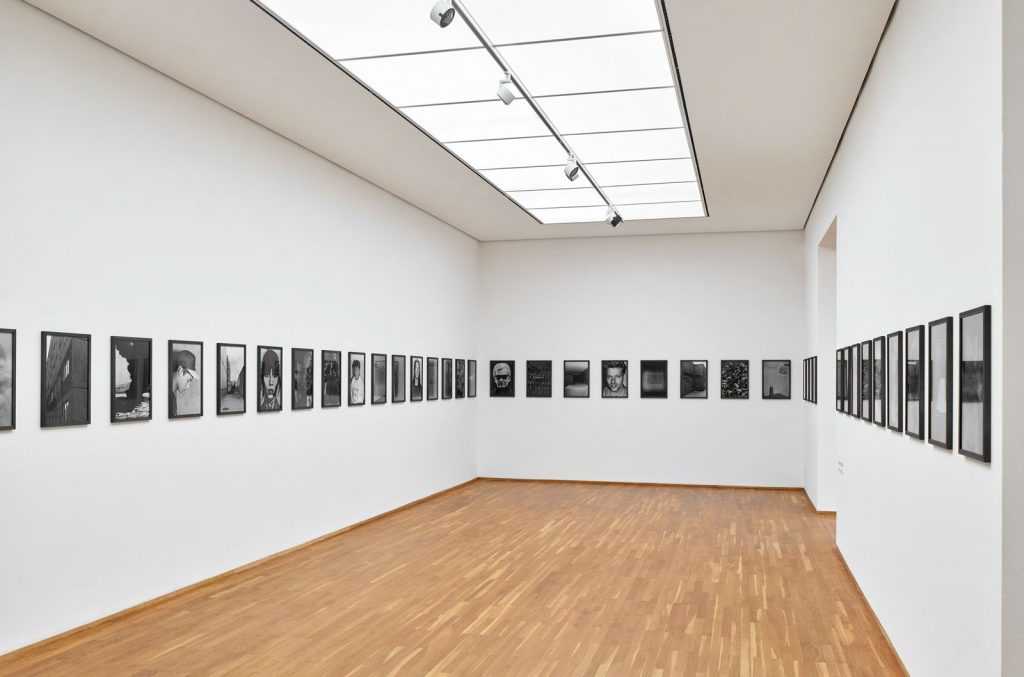
photo © Achim Kukulies, Dusseldorf
6.)
Frauen (Women), 1997–99
Before the turn of the century Michael Schmidt embarked on a series of portraits of young men and women. He finally concentrated on women of the younger generation, shooting portraits and photographs of their bodies, both fully dressed and in the nude. In Michael Schmidt’s view, these young women’s self-awareness was increasingly translating itself into a new conception of the body. His photographs put the downward levelling of individuality centre stage as the consequence of socially mediated norms and ideals. These make themselves felt in a wide range of areas, from the choice of outer garments and underwear to the stylisation of the body and the private parts, literally inscribing themselves on people’s physical appearance, posture and bearing as imprints, scars and traumata.
That Schmidt interpreted these phenomena as the formative collective experience of an entire generation was evident from his exhibitions of the Frauen group of works. He presented them as a block or tableau, emphasising what this age group have in common instead of the individual. On close inspection this group of works is revealed as explicitly political, adding another aspect to Schmidt’s preoccupation with the role of the individual in society.
In 2000 Michael Schmidt published the Frauen series in an artists’ book of the same name. At the 6th Berlin Biennale 2010 he showed selected motifs in the form of full-page ads in national newspapers and as posters in public space.
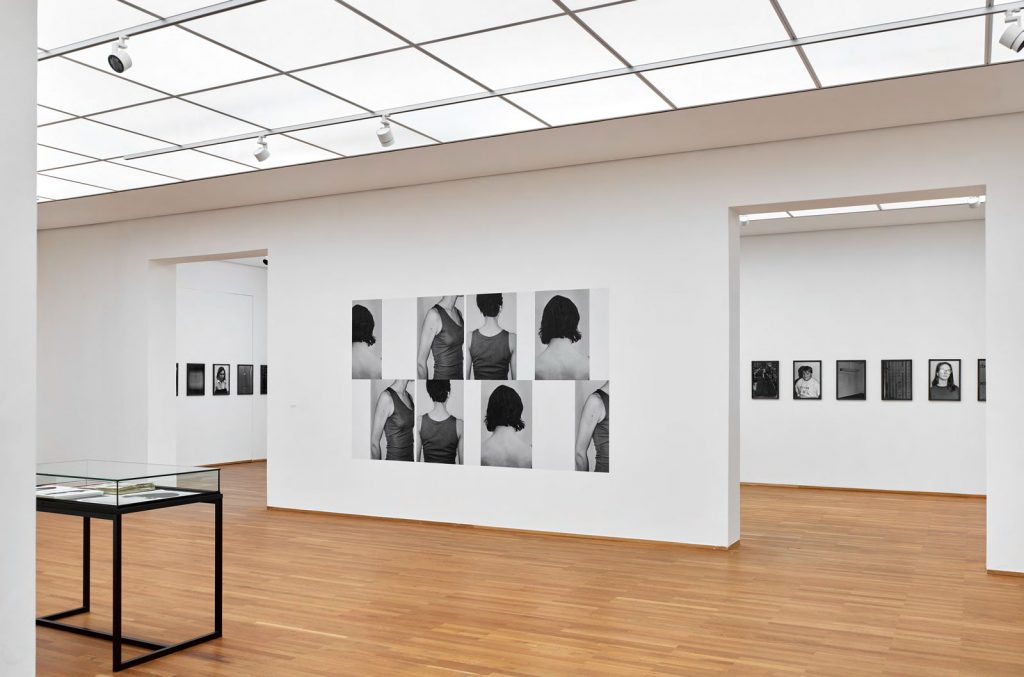
photo © Achim Kukulies, Dusseldorf
7.)
Lebensmittel (Foodstuff), 2006–10
For the Lebensmittel group of works Michael Schmidt did research in Germany, Norway, the Netherlands, Austria, Italy and Spain. The scenes of his photographs are sausage, pasta and cheese factories, fish farms, fruit and vegetable plantations, fattening farms and abatoirs, green houses, olive plantations, insect farms and food processing plants.
For the first time in his work Michael Schmidt made use of colour in addition to his usual black and white. The pictures bear no titles and make no reference to location, rendering it impossible to pin them down geographically. Schmidt expands the method he first used in
U-ni-ty in uncannily unsettling works that fuse two different halves or feature apparent doublings, repetitions and variations of motifs. In this way, he undermines the belief in the documentary power of photography and in the general validity of isolated shots.
Often it remains unclear what foodstuff is actually being presented. Both failsafe identification that used to be no problem in times gone by and the concept of seasonality have been suspended, and production these days is oriented towards standardization, alienation and globalisation rather than towards individuality, transparency and regional context.
Michael Schmidt formulates a critique of the excesses of an economic system that is notorious for its wastefulness. Topical crises make it clear that we have arrived at the limits of agricultural growth. Schmidt’s photographs reflect this insight and a highly sceptical assessment of the idea of permanent growth.
With Lebensmittel Michael Schmidt makes an important contribution to the discussion on what is arguably humanity’s most important resource. For this group of works he was awarded the prestigious Prix Pictet only a few days before his death in 2014.
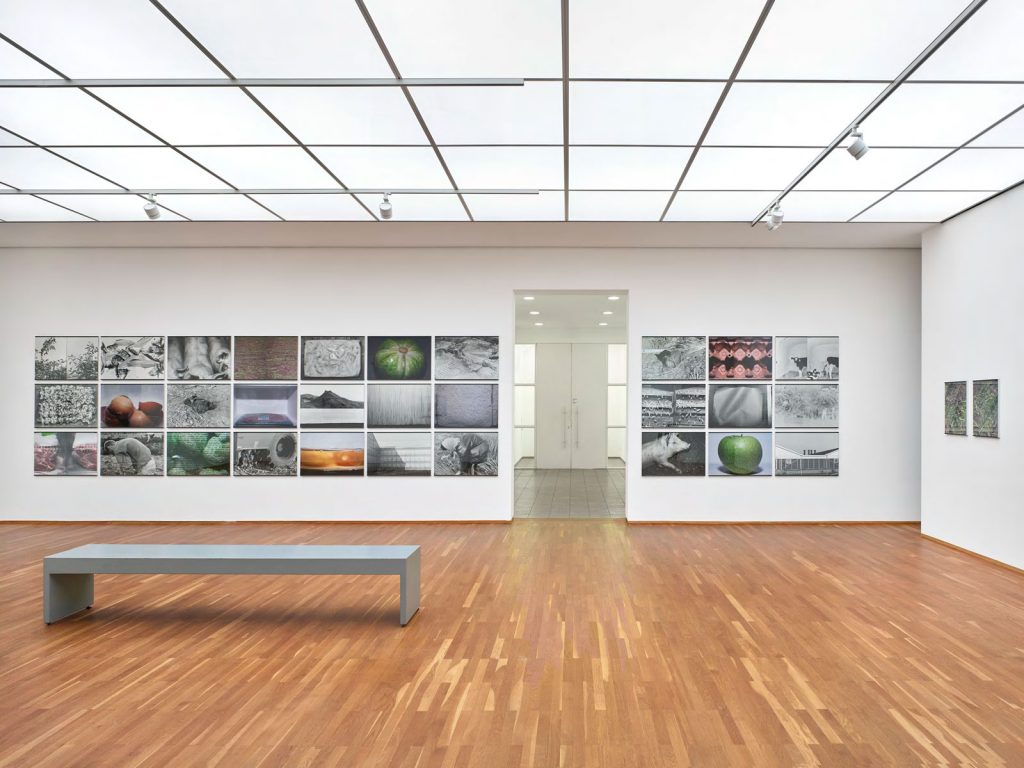
photo © Achim Kukulies, Dusseldorf
8.)
Fotografien 1965–-67 (Photographs 1965–67), 1965-67/1995
Berlin Stadtbilder (Berlin Cityscapes), 1976/1994
Menschenbilder (Ausschnitte), 1981–89/1997
Selbst (Self), 1984–89/1998
Natur (Nature), 1987–97/2014
A photographer’s documentary archive comprises negatives, slides, contact prints, digital image data, work prints, correspondence, research materials, book designs, press materials, specimen copies, work documentations, installation sketches, invitation cards, posters and other such materials.
In the mid-1990s Michael Schmidt discovered his archive as the source of new interpretations of earlier photographs. His archive was now steadily gaining in importance for him and he revisited it regularly for a critical revision of his early work and for new prints. In particular he chose photographs that display a more open character than the bulk of his early commissioned work. These photographs avoid any overt claim to reliability and temper any certainties with doubt and the reference to interest in other themes.
In the late 1990s he completed a project entitled Menschenbilder (Ausschnitte), for which he extensively cropped an older series of portraits. This artistic intervention succeeded in detaching the subjects from their surroundings, turning them into generally valid prototypes of human behaviour.
At that stage Michael Schmidt also published a series of self-portraits that had taken shape in the mid-1980s. In an act of critical self-questioning he presented himself to the camera directly and unsparingly.
When he was already seriously ill, Michael Schmidt selected in 2013–14 the pictures for his artist book Natur from his archive, the majority of which date from the late 1980s. They are testament to the significance he attached to landscape.
After its presentation in Berlin, the exhibition was shown at Jeu de Paume, Paris (11 May – 29 August 2021), the Museo Nacional Centro de Arte Reina Sofía, Madrid (28 September 2021 – 28 February 2022), and the Albertina, Vienna (24 March – 12 June 2022).
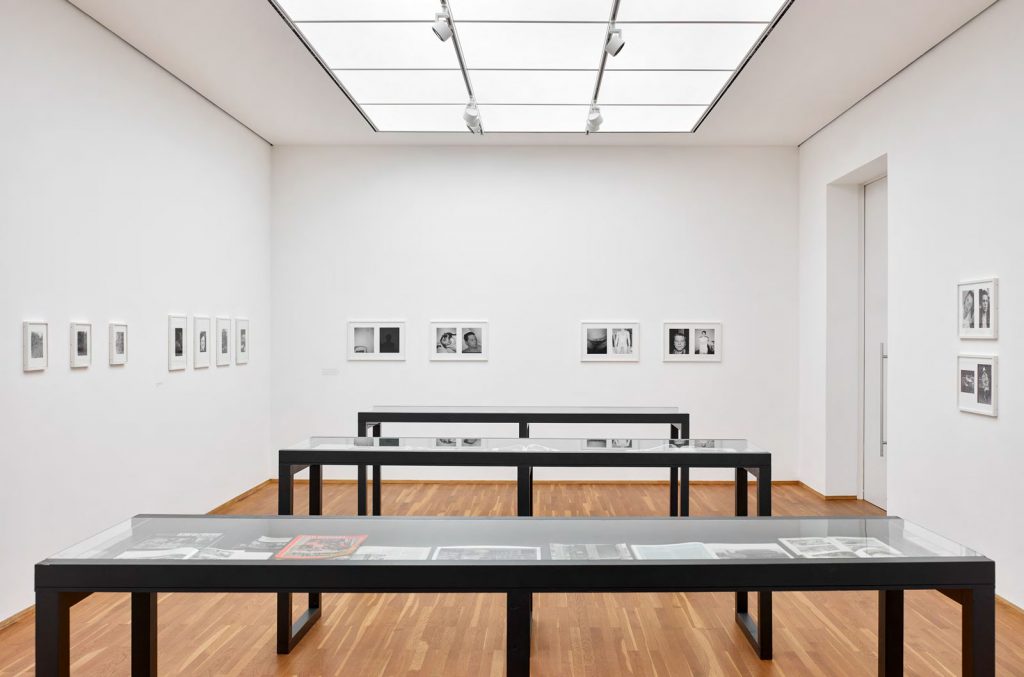
photo © Achim Kukulies, Dusseldorf
The retrospective was accompanied by a catalogue published by Koenig Books, 400 pages, with papers by Ute Eskildsen, Janos Frecot, Peter Galassi, Heinz Liesbrock and Thomas Weski, all of whom have collaborated with the artist in various projects.
The retrospective at Hamburger Bahnhof – Museum für Gegenwart – Berlin was supported by
S-Finanzgruppe
Berlin Hyp
Berliner Sparkasse
DekaBank Deutsche Girozentrale
Deutsche Leasing
Feuersozietät Berlin Brandenburg
Finanz Informatik
NORD/LB Kulturstiftung
Sparkassen-Kulturfonds des
Deutschen Sparkassen- und Giroverbandes
Sparkassenverband Westfalen-Lippe
and the Hauptstadtkulturfonds.
